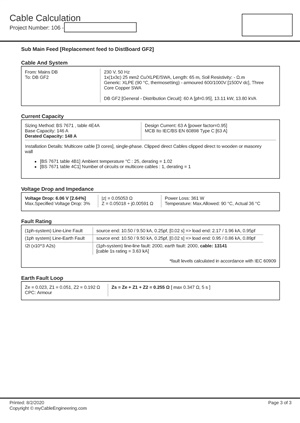I have noted that in some instances, the figure recorded for 'Zs at this board' is significantly less than the Maximum Measured Zs for the circuit recorded on the feeding DB.
e.g. DB FF4 is recorded as being fed from DB FF1. The feeding circuit to DB FF4 is recorded as having a Maximum measured Zs of 0.4 Ohm, but the 'Zs at this board' for FF4 is recorded as 0.05 Ohm - which is less than the 'Zs at this board' recorded for FF1 (0.08 Ohm) - and which, is in fact, in turn itself less than the 'Maximum measured Zs' for the circuit feeding it. Can this be true or are there errors in the report? I thought that cascaded Zs can only get larger due to the added impedance of the feeding circuits? This is not my primary area of expertise, but I am concerned that the EICR is being used to justify the upgrade of several circuits which have passed previous inspections with no problem (hope the resolution of the extracts from the EICR below are sufficient resolution to read)...



Many thanks if anyone is able to confirm my concerns or otherwise put me straight...






